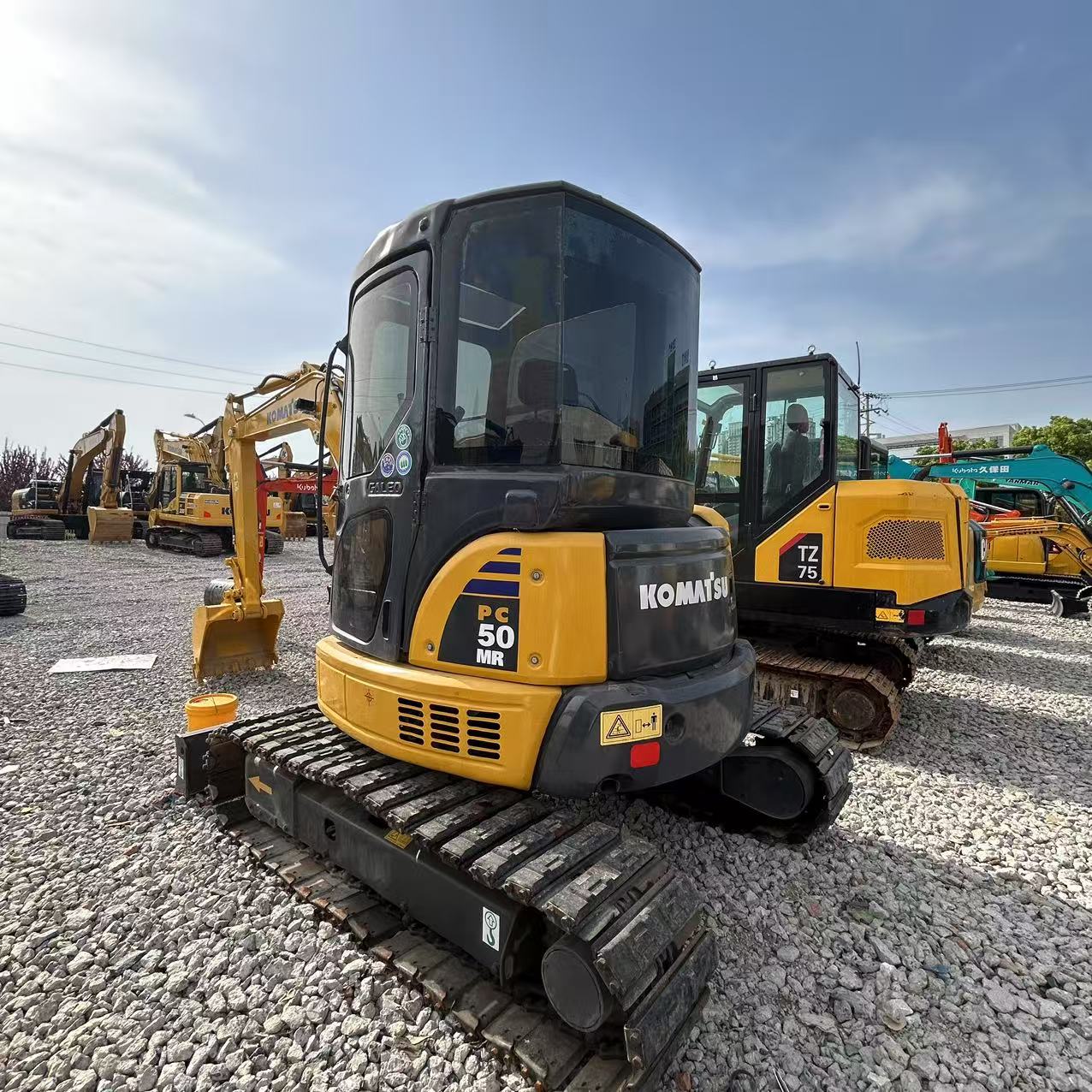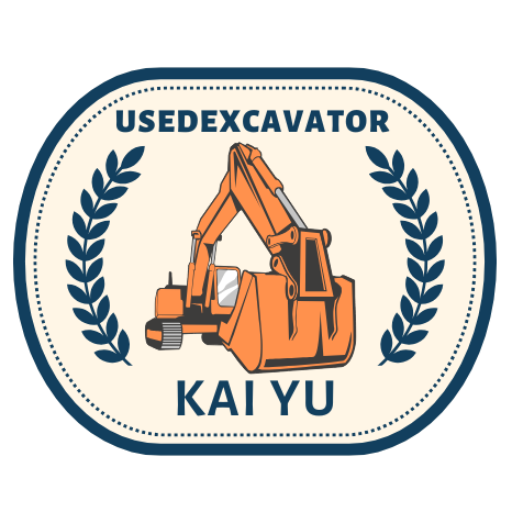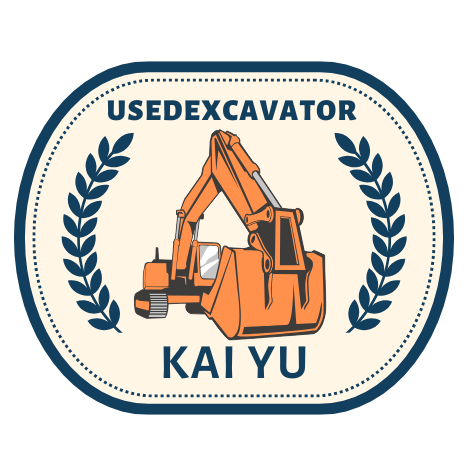While new machines often dazzle with shiny exteriors and warranty guarantees, used excavators have emerged as the savvy choice for businesses seeking to maximize profitability without sacrificing performance. From initial purchase costs to long-term maintenance savings, pre-owned excavators offer a financial edge that transcends mere price tags. This article dissects why used excavators—whether labeled as pre-owned, second-hand, or refurbished—consistently outperform new models in cost-effectiveness, empowering contractors, farmers, and industry leaders to make informed, budget-smart decisions.
The Staggering Difference in Initial Purchase Costs
The most obvious advantage of used excavators lies in their upfront affordability. New excavators can carry price tags ranging from $100,000 to over $500,000, depending on size and specifications, while a well-maintained used model of the same make and model might cost 40-60% less. For example, a five-year-old Caterpillar 320 excavator that originally sold for $250,000 could typically be found on the used market for $100,000 to $150,000— a savings that can fund an entire auxiliary equipment fleet or multiple small projects.

This cost disparity is particularly beneficial for small businesses or startups with limited capital. A landscaping company, for instance, might need an excavator for trench digging and site grading but lacks the budget for a new machine. Purchasing a used excavator allows them to allocate remaining funds to labor, materials, or marketing, accelerating business growth. Even large corporations benefit from this strategy: a construction firm working on a tight-budget infrastructure project can save millions by opting for a fleet of pre-owned excavators instead of new ones, redirecting savings to project overhead or client bids.
Why New Excavators Lose Value Faster
New excavators suffer from what industry insiders call “drive-off depreciation”—a phenomenon where a machine loses up to 20% of its value within the first year of purchase. By year three, that depreciation can climb to 40-50%, meaning a $200,000 new excavator might be worth only $100,000 or less. Used excavators, however, have already weathered the steepest part of the depreciation curve. A five-year-old machine may only depreciate an additional 5-10% per year, making its value much more stable.
This difference is critical for businesses concerned with asset valuation. Suppose a contractor buys a new excavator for $180,000 and sells it three years later; they might recoup only $90,000, losing $90,000 to depreciation. In contrast, buying that same excavator used for $120,000 after three years and selling it five years later might yield a resale value of $70,000— a loss of $50,000, which is $40,000 less than the new machine. This “depreciation gap” directly impacts a company’s balance sheet, allowing used excavator owners to preserve capital and maintain higher asset values over time.
The Hidden Savings of Pre-Owned Machines
Contrary to popular belief, used excavators can be more cost-effective to maintain than new models. Older excavator models—especially those from established brands like John Deere, Komatsu, or Volvo—often have simpler mechanical systems that are easier and cheaper to repair. Replacement parts for these tried-and-true models are widely available, both from original equipment manufacturers (OEMs) and aftermarket suppliers, driving down costs. For example, a hydraulic pump for a 2010 excavator might cost 30% less than a comparable part for a 2020 model, simply because the older part has been in production longer and faces more competition in the aftermarket.
Additionally, many used excavators come with documented maintenance histories, allowing buyers to identify and address potential issues proactively. A pre-owned excavator that has been regularly serviced by a fleet manager is often more reliable than a new machine that might be subjected to neglect or improper use in its early years. Independent repair shops also tend to charge less for servicing used excavators, as they’re familiar with the models and don’t rely on brand-specific diagnostic tools that come with new equipment.
Flexible Financing and Lower Insurance Costs
Financing a used excavator typically comes with more favorable terms than financing a new one. Lenders recognize that used equipment has already depreciated significantly, reducing the risk of negative equity. As a result, interest rates for used excavator loans are often lower, and down payment requirements may be more lenient. For instance, a business might secure a loan for a used excavator with a 10% down payment and a 6% interest rate, whereas a new machine might require 20% down and an 8% rate—saving thousands in interest payments over the loan term.
Insurance costs also favor used excavators. Since insurance premiums are based on the machine’s value, a pre-owned excavator will have lower monthly or annual premiums. A $150,000 used excavator might cost $3,000 per year to insure, while a $250,000 new model could cost $5,000 or more— a difference of $2,000 annually that adds up to $10,000 over five years. These savings can be reinvested in the business or used to cover other operational expenses.
How Used Excavators Boost Deductions
In the United States, businesses can take advantage of tax codes that favor used equipment purchases. The IRS allows companies to deduct the cost of used excavators through programs like Section 179, which lets businesses expense up to $1,050,000 of equipment purchases in 2023 (subject to adjustments). Since used excavators cost less, businesses can often fully deduct the purchase price in the first year, reducing taxable income more aggressively than if they had bought a new machine (which might only partially qualify for deductions due to its higher cost).
Additionally, depreciation deductions for used excavators can be structured to maximize tax benefits. Businesses can use the Modified Accelerated Cost Recovery System (MACRS) to depreciate the equipment over time, taking larger deductions in the early years. For example, a $120,000 used excavator depreciated over five years might yield deductions of $24,000 per year, whereas a $200,000 new machine depreciated over the same period would yield $40,000 per year— but the used machine’s lower initial cost means the business may have more cash on hand to invest in other tax-deductible expenses.
Matching Equipment to Task Without Overspending
Used excavators offer a unique advantage in versatility, allowing businesses to acquire specialized machines for specific tasks without overcommitting funds. For example, a contractor might need a mini excavator for tight urban jobs and a large crawler excavator for heavy demolition. Buying both new could cost hundreds of thousands, but purchasing them used allows the contractor to get both machines for a fraction of the price. This flexibility is especially valuable for businesses that tackle diverse projects, from residential landscaping to commercial construction.
Moreover, used excavators can be modified or upgraded more cost-effectively. A company might buy a used excavator with a standard bucket and then invest in specialized attachments like thumb grapples, hydraulic breakers, or trenchers— a total cost that’s still lower than buying a new, fully equipped machine. This modular approach lets businesses tailor their equipment to specific needs without paying for features they don’t require on every job.
The Resale Market: A Safety Net for Your Investment
The used excavator market is robust, meaning owners can often resell their machines with minimal loss— or even at a profit, in some cases. Popular models from reputable brands hold their value exceptionally well, especially if they’re well-maintained and come with complete documentation. For instance, a Kubota KX080-4 mini excavator, known for its reliability, might lose only 15-20% of its used purchase price over five years if kept in good condition. This strong resale value acts as a financial safety net, allowing businesses to upgrade to newer models or liquidate assets without taking a huge hit.
Compare this to new excavators, which lose value rapidly and can be harder to resell in a down market. During economic slowdowns, used equipment tends to retain its appeal due to its lower cost, making it easier to find buyers. This liquidity is crucial for businesses that need to adapt quickly to changing market conditions, ensuring they can convert their equipment into cash when necessary.
Case Studies: Real-World Cost Savings with Used Excavators
Case Study 1: Small Contractor Maximizes Profit Margin
A family-owned construction company in Texas needed a mid-sized excavator for residential foundation work. Facing a tight budget, they considered a new John Deere 210G ($185,000) versus a three-year-old used model ($110,000). By choosing the used excavator, they saved $75,000 upfront. Over five years, they spent $15,000 on maintenance (regular oil changes, hydraulic repairs), while a new machine would have cost $10,000 in maintenance (under warranty) but lost $90,000 to depreciation. The used excavator’s resale value after five years was $60,000, versus the new machine’s $95,000. Total cost over five years:
- Used: $110,000 + $15,000 – $60,000 = $65,000
- New: $185,000 + $10,000 – $95,000 = $100,000
The used excavator saved them $35,000 over the period.
Case Study 2: Agricultural Business Expands on a Dime
A soybean farmer in Iowa needed an excavator for drainage projects and land leveling. They found a five-year-old Caterpillar 314E used for $85,000, compared to a new 314F for $140,000. The used machine had 3,500 hours but came with complete service records. By purchasing used, they allocated the $55,000 savings to seed and fertilizer, increasing their crop yield. Over three years, they spent $8,000 on maintenance (replacing tracks and a hydraulic hose), while the new machine would have cost $5,000 in maintenance (warranty) but depreciated by $70,000. Reselling the used excavator for $60,000 after three years, their total cost was $85,000 + $8,000 – $60,000 = $33,000, versus $140,000 + $5,000 – $70,000 = $75,000 for new— a savings of $42,000.
How to Ensure Your Used Excavator Is a Smart Buy
While cost-effectiveness is clear, buying a used excavator requires due diligence to avoid pitfalls. Key steps include:
- Thorough Inspection: Hire a certified mechanic to check engine hours, hydraulic system pressure, track wear, and structural integrity.
- Documentation Review: Verify the title, maintenance logs, and lien history to ensure legal ownership and a transparent service record.
- Test Operation: Run the excavator through its paces, checking for smooth movement, unusual noises, and leaks.
- Warranty Options: Some used excavators come with limited warranties from dealers, providing extra peace of mind.
By taking these precautions, buyers can minimize the risk of unexpected repair costs and ensure their used excavator delivers on its cost-saving promise.
Why “Used” Doesn’t Mean “Inferior”
Myth 1: “Used excavators are unreliable and break down more often.”
Reality: Many used excavators are retired from fleet operations where they were meticulously maintained. A well-serviced used machine can be as reliable as new, with the added benefit of having worked out initial bugs.
Myth 2: “New excavators offer better technology and efficiency.”
Reality: While new models have advanced features, older excavators are often simpler, more durable, and less expensive to repair. For many basic tasks, older technology is more than sufficient.
Myth 3: “Used excavators are hard to find in good condition.”
Reality: Online marketplaces, authorized dealers, and equipment auctions make it easy to find used excavators with detailed specifications and condition reports. Reputable sellers prioritize transparency, making quality used machines widely accessible.
The Financial Wisdom of Choosing Pre-Owned
In the world of heavy equipment, the decision to buy a used excavator is not about compromising on quality but about embracing a strategic financial approach. From the significant upfront savings to the reduced depreciation, lower maintenance costs, and tax advantages, pre-owned excavators offer a cost-effectiveness that new machines simply can’t match. For businesses ranging from small contractors to large agricultural operations, the used excavator represents a smart investment— one that preserves capital, enhances flexibility, and delivers long-term value.
As industry leaders continue to prioritize profitability and operational efficiency, the used excavator market will only grow in importance. By understanding the numbers and doing due diligence, businesses can unlock a world of savings while maintaining the performance and reliability they need. In the end, it’s not just about buying equipment; it’s about making a financial choice that sets your business up for success— today and in the years to come.


